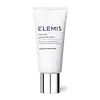What's inside
What's inside
 Key Ingredients
Key Ingredients

No key ingredients
 Benefits
Benefits

 Concerns
Concerns

 Ingredients Side-by-side
Ingredients Side-by-side

Water
Skin ConditioningGlycerin
HumectantHydrolyzed Soy Protein
HumectantBambusa Arundinacea Stem Extract
Skin ConditioningPEG-40 Hydrogenated Castor Oil
EmulsifyingPentylene Glycol
Skin ConditioningHydrolyzed Cottonseed Protein
Skin ConditioningCitrus Medica Limonum Fruit Extract
Skin ConditioningPlantago Major Leaf Extract
Skin ConditioningKrameria Triandra Root Extract
Skin ConditioningLavandula Angustifolia Oil
MaskingLitsea Cubeba Fruit Oil
MaskingCarbomer
Emulsion StabilisingButylene Glycol
HumectantSodium Hydroxide
BufferingCitric Acid
BufferingDisodium EDTA
Phenoxyethanol
PreservativeSorbic Acid
PreservativePotassium Sorbate
PreservativeCitral
PerfumingLinalool
PerfumingLimonene
PerfumingWater, Glycerin, Hydrolyzed Soy Protein, Bambusa Arundinacea Stem Extract, PEG-40 Hydrogenated Castor Oil, Pentylene Glycol, Hydrolyzed Cottonseed Protein, Citrus Medica Limonum Fruit Extract, Plantago Major Leaf Extract, Krameria Triandra Root Extract, Lavandula Angustifolia Oil, Litsea Cubeba Fruit Oil, Carbomer, Butylene Glycol, Sodium Hydroxide, Citric Acid, Disodium EDTA, Phenoxyethanol, Sorbic Acid, Potassium Sorbate, Citral, Linalool, Limonene
Water
Skin ConditioningPropylene Glycol
HumectantOctyldodecanol
EmollientGlyceryl Stearate Se
EmulsifyingCetearyl Alcohol
EmollientGlycerin
HumectantC12-16 Alcohols
EmollientHelianthus Annuus Seed Oil
EmollientNiacinamide
SmoothingXanthan Gum
EmulsifyingPhenoxyethanol
PreservativePalmitic Acid
EmollientHydrogenated Lecithin
EmulsifyingParfum
MaskingPapain
Skin ConditioningChlorphenesin
AntimicrobialLactis Proteinum
Skin ConditioningAnanas Sativus Fruit Extract
Skin ConditioningSodium Dehydroacetate
PreservativeDisodium EDTA
Porphyridium Cruentum Extract
Skin ConditioningCinnamyl Alcohol
PerfumingFucus Vesiculosus Extract
EmollientCapsicum Annuum Fruit Extract
AntimicrobialTocopherol
AntioxidantCitronellol
PerfumingGeraniol
PerfumingLimonene
PerfumingCitral
PerfumingMentha Arvensis Leaf Oil
MaskingCuminum Cyminum Seed Oil
MaskingWater, Propylene Glycol, Octyldodecanol, Glyceryl Stearate Se, Cetearyl Alcohol, Glycerin, C12-16 Alcohols, Helianthus Annuus Seed Oil, Niacinamide, Xanthan Gum, Phenoxyethanol, Palmitic Acid, Hydrogenated Lecithin, Parfum, Papain, Chlorphenesin, Lactis Proteinum, Ananas Sativus Fruit Extract, Sodium Dehydroacetate, Disodium EDTA, Porphyridium Cruentum Extract, Cinnamyl Alcohol, Fucus Vesiculosus Extract, Capsicum Annuum Fruit Extract, Tocopherol, Citronellol, Geraniol, Limonene, Citral, Mentha Arvensis Leaf Oil, Cuminum Cyminum Seed Oil
Ingredients Explained
These ingredients are found in both products.
Ingredients higher up in an ingredient list are typically present in a larger amount.
Citral is a fragrance and used to add a lemon-like scent to products. It is both naturally found in plants and created synthetically. In plants, it is commonly occurring in lemon myrtle, lemongrass, lemon tea-tree, lemon verbena, and other citruses.
The EU mandates Citral be listed separately as a fragrance. It is a known allergen and may cause contact dermatitis. Citral can also used as a masking ingredient.
The term 'fragrance' is not regulated in many countries. In many cases, it is up to the brand to define this term. For instance, many brands choose to label themselves as "fragrance-free" because they are not using synthetic fragrances. However, their products may still contain ingredients such as essential oils that are considered a fragrance.
The term 'citral' is a collective term for two geometric isomers: geranial/Citral A and neral/Citral B.
Learn more about CitralDisodium EDTA plays a role in making products more stable by aiding other preservatives.
It is a chelating agent, meaning it neutralizes metal ions that may be found in a product.
Disodium EDTA is a salt of edetic acid and is found to be safe in cosmetic ingredients.
Learn more about Disodium EDTAGlycerin is already naturally found in your skin. It helps moisturize and protect your skin.
A study from 2016 found glycerin to be more effective as a humectant than AHAs and hyaluronic acid.
As a humectant, it helps the skin stay hydrated by pulling moisture to your skin. The low molecular weight of glycerin allows it to pull moisture into the deeper layers of your skin.
Hydrated skin improves your skin barrier; Your skin barrier helps protect against irritants and bacteria.
Glycerin has also been found to have antimicrobial and antiviral properties. Due to these properties, glycerin is often used in wound and burn treatments.
In cosmetics, glycerin is usually derived from plants such as soybean or palm. However, it can also be sourced from animals, such as tallow or animal fat.
This ingredient is organic, colorless, odorless, and non-toxic.
Glycerin is the name for this ingredient in American English. British English uses Glycerol/Glycerine.
Learn more about GlycerinLimonene is a fragrance that adds scent and taste to a formulation.
It's found in the peel oil of citrus fruits and other plants such as lavender and eucalyptus. The scent of limonene is generally described as "sweet citrus".
Limonene acts as an antioxidant, meaning it helps neutralize free radicals.
When exposed to air, oxidized limonene may sensitize the skin. Because of this, limonene is often avoided by people with sensitive skin.
The term 'fragrance' is not regulated in many countries. In many cases, it is up to the brand to define this term. For instance, many brands choose to label themselves as "fragrance-free" because they are not using synthetic fragrances. However, their products may still contain ingredients such as essential oils that are considered a fragrance.
Learn more about LimonenePhenoxyethanol is a preservative that has germicide, antimicrobial, and aromatic properties. Studies show that phenoxyethanol can prevent microbial growth. By itself, it has a scent that is similar to that of a rose.
It's often used in formulations along with Caprylyl Glycol to preserve the shelf life of products.
Water. It's the most common cosmetic ingredient of all. You'll usually see it at the top of ingredient lists, meaning that it makes up the largest part of the product.
So why is it so popular? Water most often acts as a solvent - this means that it helps dissolve other ingredients into the formulation.
You'll also recognize water as that liquid we all need to stay alive. If you see this, drink a glass of water. Stay hydrated!
Learn more about Water